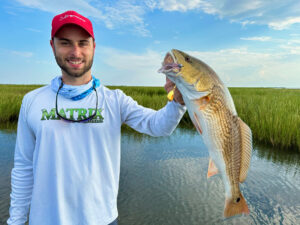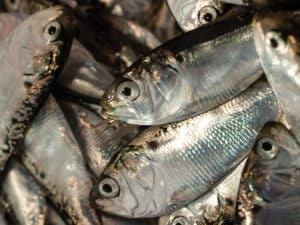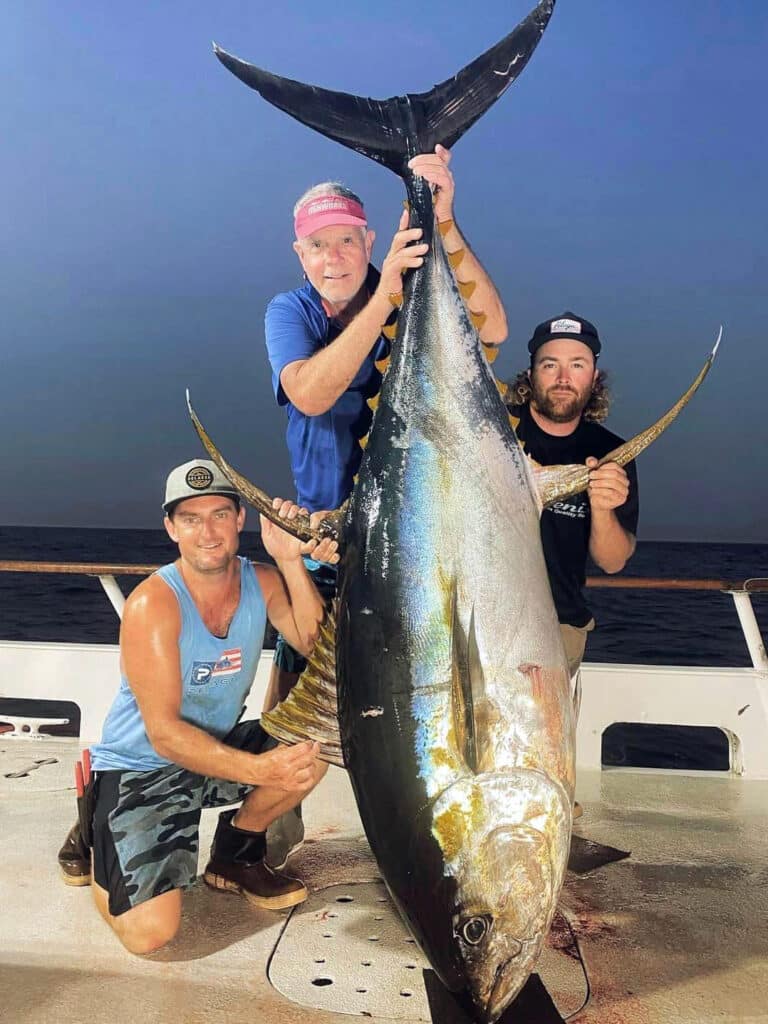
If you want to land a yellowfin tuna over 200 pounds, clear your calendar for two weeks, pack a dozen heavy-action livebait, jigging and casting rods, and jump on a long-range tuna trip out of San Diego, California. Courtesy Red Rooster III
Best Time for California Yellowfin Tuna
Captain Andy Cates, of the Red Rooster III, says the season kicks off in September with 8- to 10-day trips to the lower banks including Potato Bank, Finger Bank and Morgan Bank. This is the land of giants, with the majority of yellowfin tuna weighing 200 to 300 pounds. “If you get a bite, it’s a big one,” Cates says.
The captain compares early-season fishing to big game hunting. He says anglers prepare for weeks for a shot at a true trophy. By January, the water on the lower banks cools down and the big tuna disappear. “We have no idea where they go,” Cates marvels.
“Last season was the best we’ve seen in the past few years,” reports Capt. Andy Cates, who fishes off Mexico’s Baja peninsula for trophy yellowfin tuna weighing up to 300 pounds. With favorable water temperatures, he says the tuna and wahoo fishing was fantastic.
That’s when he turns his attention to longer 15- to 18-day trips to the Hurricane Bank. Cates describes Hurricane Bank’s fishing as “action packed.” The bulk of the action is on 90- to 150-pound yellowfin. “Lucky anglers can get eight to 10 bites a day,” he says.
The main goal of long-range anglers is landing a 200- to 300-pound cow yellowfins. Cates says February through April is the best shot at a trophy. In addition to tuna, Hurricane Bank offers top-notch wahoo fishing.
Cooler Water Temperatures Scared off Sharks
With the season wrapping up, Cates reflects on the trends he observed. “The water stayed cooler, so the fishing was better,” he says. Cates explains the cooler water discouraged sharks and presented a better opportunity to catch a tuna.
In the beginning of January, Cates explained that the water temperature was in the mid-70s. As the season progressed, the temperature dropped to 72.5 degrees and the sharks disappeared. “It was absolutely brilliant fishing,” Cates remembers.
Hooks and Plugs for Tuna
Going toe to toe with a 300-pound yellowfin tuna requires the most advanced tackle. Cates says, “Lightweight and powerful rods and reels we use make it possible for anyone to land a cow.” The key connection is the hook, and Cates prefers the Trokar 619 series for strength and performance.
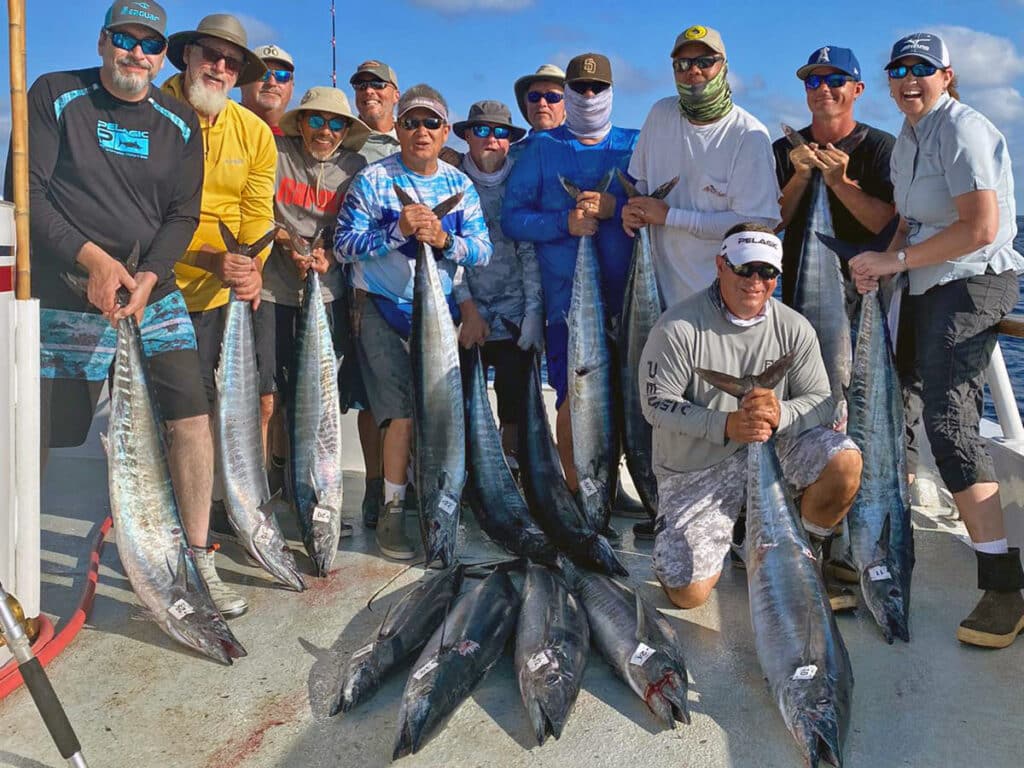
The hot lure for trolling for wahoo is the Nomad DTX. Cates laughs, “Everyone on the back of the boat has a DTX.” For the optimal action, anglers tie the swimming plug directly to the mainline. “Using wire makes the lure come out of the water,” he says.
Bluefin Tuna Fishing Heats up in June
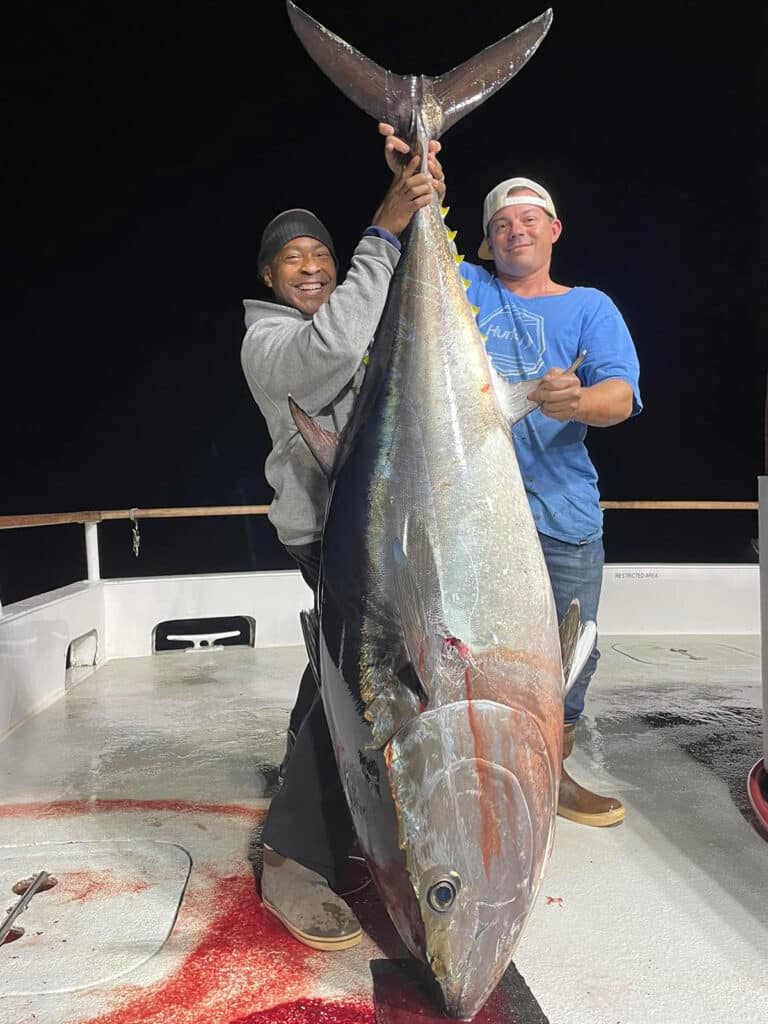
As we interviewed Cates, he was preparing Red Rooster III for the last 15-day trip to the banks. When he returns, he expects San Diego bluefin tuna fishing to heat up. “Bluefin fishing is spotty right now but it should get better in June,” he says.
Cates says the best bluefin action is at night, so he plans to bottom fish during the day and tuna fish at night. “We’ll catch 50- to 200-pound bluefin only 50 miles from San Diego,” he says.
As for next season on the Mexican banks, Cates is hopeful. “If everything sustains and we don’t get a lot of warm water, I expect next season to rival this year.”



